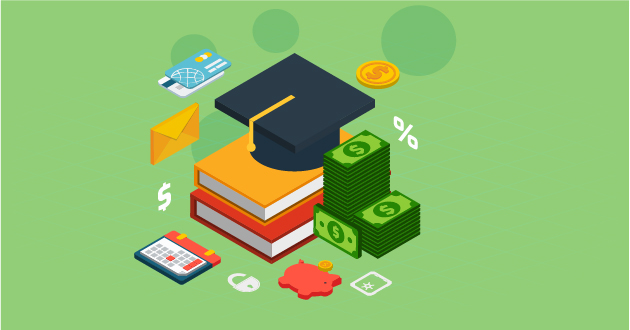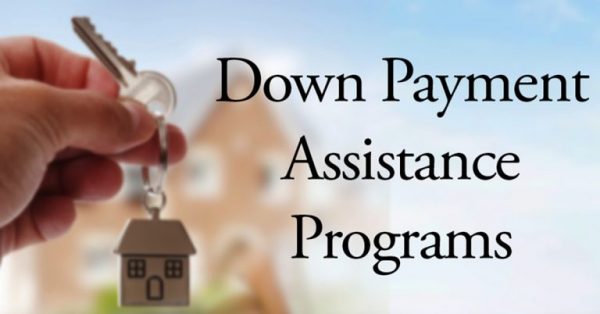Are you drowning in student loan debt? Well, fret no more because we’ve got the ultimate guide to navigating the treacherous waters of student loan repayment assistance programs!
Whether you’re a recent graduate or have been struggling with your loans for years, this blog post is here to help you find your way to financial freedom.
Say goodbye to sleepless nights and hello to a brighter future as we unravel the secrets behind these amazing programs that can truly change your life. So grab your life vest and let’s dive right in!
Introduction to Student Loan Repayment Assistance Programs
Contents

Student loan repayment assistance programs can help recent graduates lower their monthly payments and/or consolidate their loans. These programs are typically offered by employers as an employee benefit. Some programs may be available to all employees, while others may be targeted toward employees with certain types of loans or occupations.
Employers often partner with student loan repayment assistance providers to offer this benefit to their employees. Employees can typically enroll in these programs through their employer’s website or human resources department.
Once enrolled, the provider will work with the employee’s loan servicer to lower the monthly payment amount and/or consolidate the loans. The provider will also track the employee’s progress and report it back to the employer.
The benefits of student loan repayment assistance programs include lower monthly payments, fewer phone calls from debt collectors, and peace of mind knowing that you are making progress on your loans. These programs can also help you stay employed at your current job, as many employers view these benefits as a way to retain top talent.
Types of Programs Available
There are four main types of repayment assistance programs available for federal student loans:
- Income-Driven Repayment Plans: These plans base your monthly payment on your income and family size. There are four income-driven repayment plans available, and you can switch between them at any time.
- Public Service Loan Forgiveness: If you work for a government or nonprofit organization, you may be eligible for loan forgiveness after 10 years of qualifying payments.
- Perkins Loan Cancellation and Discharge: If you have a Perkins Loan, you may be eligible for loan cancellation or discharge if you work in certain professions or serve in the military.
- Default Resolution Options: If you default on your federal student loan, there are several resolution options available to help get you back on track, including loan rehabilitation and consolidation.
These repayment assistance programs can help make it easier to manage your federal student loan debt and stay in good standing with your lender.
Qualifying Criteria for Each Program
- To qualify for the Public Service Loan Forgiveness program, you must work full-time for a qualifying employer in an eligible public service job. You also must make 120 qualifying monthly payments on your Direct Loans after October 1, 2007.
- To qualify for the Teacher Loan Forgiveness program, you must teach full-time for five complete and consecutive academic years in a low-income elementary or secondary school or educational service agency. You also must have made 120 qualifying monthly payments on your Direct Loans after October 1, 2007.
- To qualify for the Perkins Loan Cancellation and Discharge program, you must work in certain public service or teaching jobs. If you are a teacher, you must teach full-time in a low-income elementary or secondary school or educational service agency.
- If you work in other qualifying public service jobs, there is no minimum hours requirement. You also must have made 120 qualifying monthly payments on your Direct Loans after October 1, 2007.
Pros and Cons of Each Program
When it comes to student loan repayment assistance programs, there are a few things to consider.
The first is whether the program is income-driven or not. Income-driven repayment plans base your monthly payment on a percentage of your discretionary income, which can make them more affordable for some borrowers. However, they also typically extend the length of your repayment term, which means you’ll end up paying more in interest over time.
The second thing to consider is whether the program offers any forgiveness benefits. Some programs forgive a portion of your loans after you make a certain number of payments, while others forgive your loans entirely after you meet certain requirements (such as working in a public service job). Keep in mind that any forgiven amount may be considered taxable income by the IRS.
Here are some specific pros and cons of popular student loan repayment assistance programs:
Pay As You Earn (PAYE):
Pros: Monthly payments are capped at 10% of your discretionary income, and any remaining balance is forgiven after 20 years of qualifying payments.
Cons: Only available to borrowers who took out their first loan on or after October 1, 2007, and received their last loan disbursement on or after October 1, 2011.
Income-Based Repayment (IBR):
Pros: Monthly payments are capped at 15% of your discretionary income, and any remaining balance is forgiven after 25 years of qualifying payments.
Cons: Only available to borrowers who took out their first loan on or after July 1, 2014.
Public Service Loan Forgiveness (PSLF):
Pros: Offers complete loan forgiveness after making 120 qualifying payments while working in a public service job.
Cons: Requires borrowers to make 120 payments over 10 years, which can be difficult for some people. Also, only certain types of loans qualify for forgiveness.
How to Apply for Repayment Assistance Programs?

There are a number of repayment assistance programs available for student loan borrowers. Some programs are offered by the federal government, while others are offered by state governments or private organizations.
- To apply for a repayment assistance program, you will need to contact the organization that administers the program. You will likely need to provide documentation of your financial situation, such as income tax returns, pay stubs, and bank statements.
- Once you have submitted your application, the organization will review your case and determine if you are eligible for assistance. If you are approved, you will be able to make reduced payments on your student loans or have your loans forgiven entirely.
If you are struggling to repay your student loans, don’t hesitate to reach out for help. There are many programs available that can assist you in making your payments more manageable.
Tips on Making the Most of Your Repayment Assistance Program
If you’re struggling to repay your student loans, you may be able to find relief through a repayment assistance program. These programs can help you lower your monthly payments or get your loans forgiven altogether.
To make the most of a repayment assistance program, it’s important to do your research and understand the terms of the program. You should also make sure you keep up with your payments while you’re enrolled in the program. If you fall behind, you may not be eligible for the full benefits of the program.
Here are some tips to help you make the most of a repayment assistance program:
- Do your research: There are many different repayment assistance programs available, so it’s important to do your research and find one that’s right for you. Consider factors like eligibility requirements, benefits, and how long the program will last.
- Understand the terms of the program: Before enrolling in a repayment assistance program, make sure you understand all of the terms and conditions. This includes things like how much your monthly payments will be reduced and whether or not there are any fees associated with the program.
- Keep up with your payments: Once you’re enrolled in a repayment assistance program, it’s important to keep up with your monthly payments. If you fall behind, you may not be eligible for the full benefits of the program.
- Contact your lender if you have questions: If you have any questions about your repayment assistance program or how to apply, contact your lender or servicer. They can provide you with more information and help you figure out the best course of action.
- Consider other options: If a repayment assistance program isn’t right for you, there may be other options available. These could include income-driven repayment plans, loan consolidation, or refinancing.
Conclusion
Student loan repayment assistance programs provide a valuable service to those who are struggling with their student loans. With the right program, you can reduce your monthly payments and take advantage of other benefits such as loan forgiveness or even debt consolidation.
It is important to do your research in order to find the best option for you. Taking time to explore all available options will help ensure that you make the most informed decision possible when it comes to getting the financial support you need for student loan repayment.